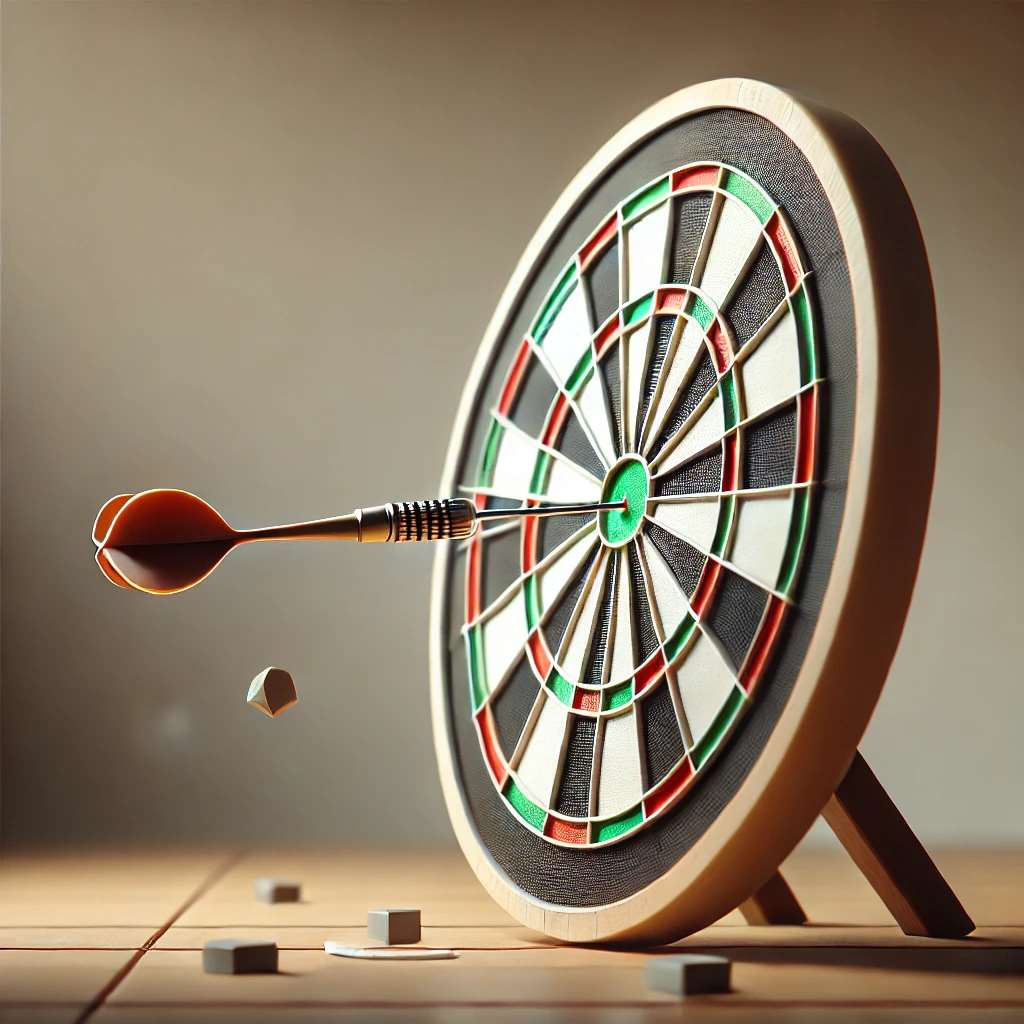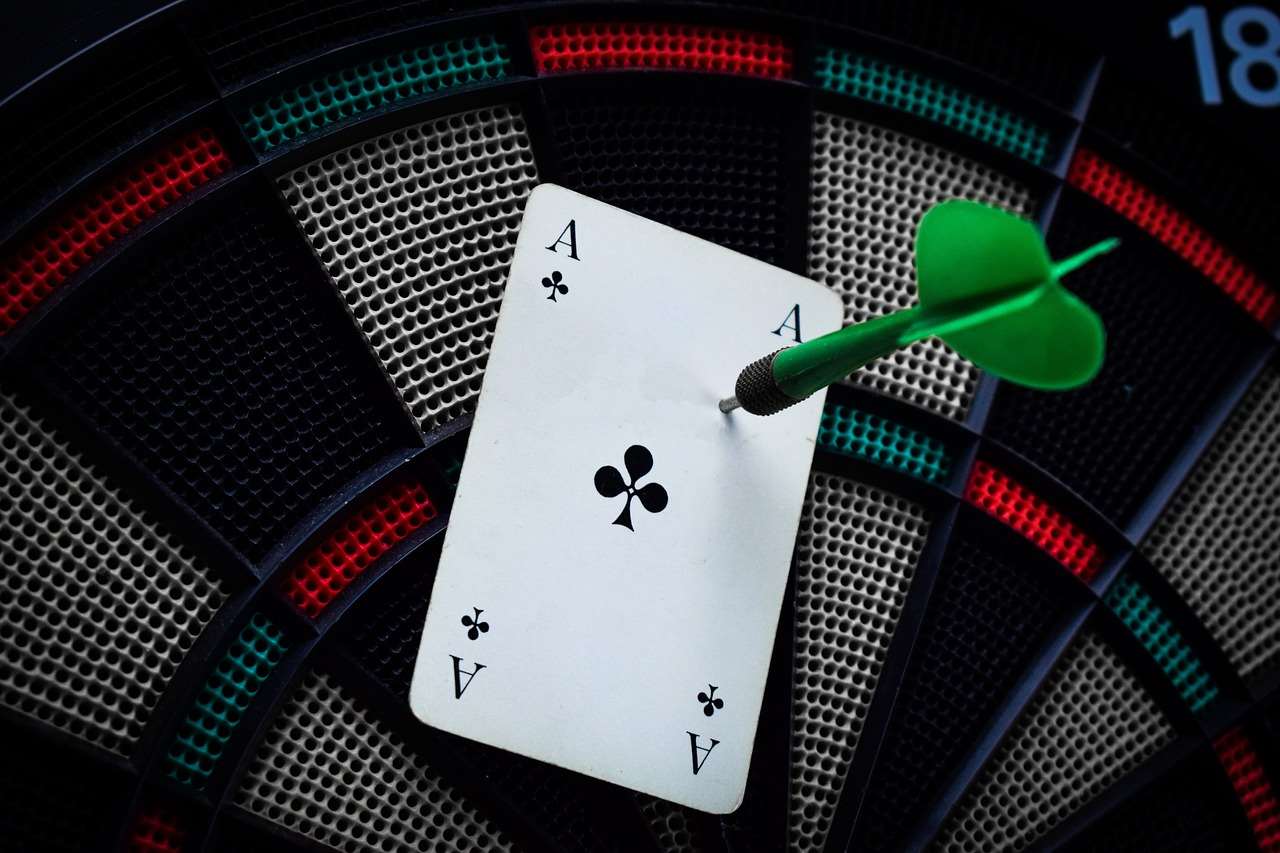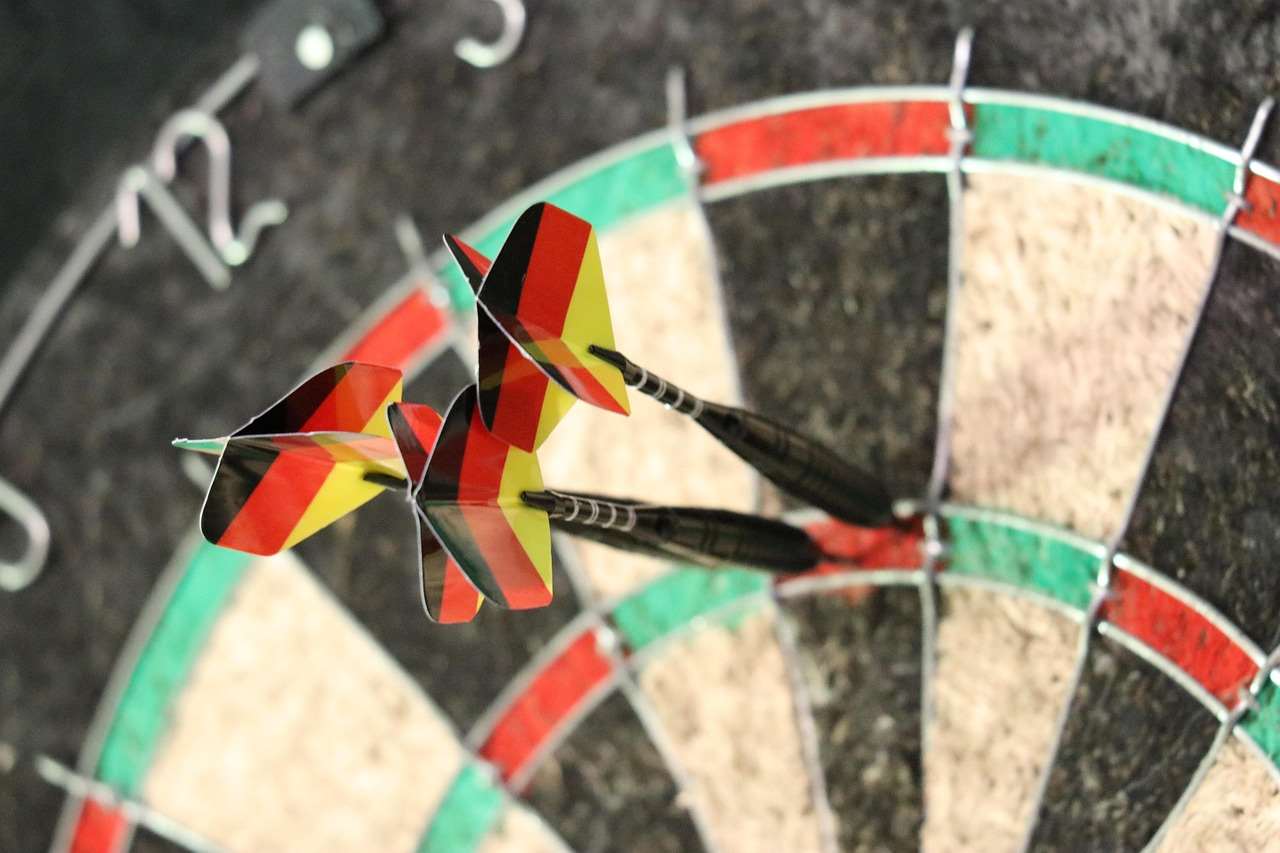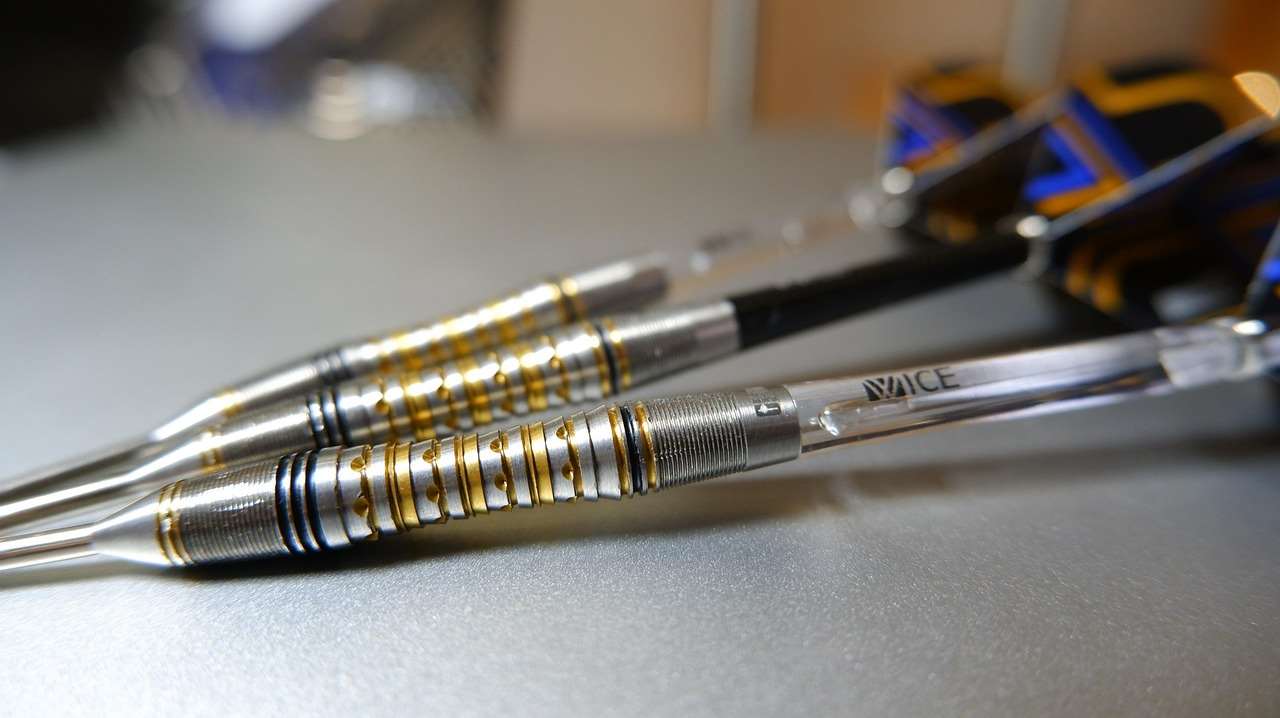Understanding a darts leg and set is crucial for both players and spectators. A leg is a single game of darts, while a set is a collection of legs played to a certain number of wins. This article will delve deeper into the intricacies of a darts leg and set, exploring scoring systems, common strategies, and tips for improvement.
⚠️ Still Using Pen & Paper (or a Chalkboard)?! ⚠️
Step into the future! The Dart Counter App handles all the scoring, suggests checkouts, and tracks your stats automatically. It's easier than you think!
Try the Smart Dart Counter App FREE!Ready for an upgrade? Click above!
Let’s start with the basics. A single leg in darts usually involves a player aiming to reach a predetermined score, typically 501, by throwing darts at a dartboard. The player throws three darts at a time, and the score is tallied after each turn. This continues until one player successfully reduces their score to zero. However, remember, your last dart must hit a double or a bullseye (depending on the rules). This is where much of the thrill and strategy of the darts leg and set resides. Then we’ll unpack the concept of sets and how multiple legs build into a match.
The excitement of a darts leg and set often comes down to those final throws. The pressure mounts as players strive to finish the leg with a double or bullseye, sometimes leading to surprising outcomes.
Understanding Darts Legs and Sets: A Deeper Dive
Now that we’ve covered the fundamental concepts of a darts leg and set, let’s explore the nuances of the game. The scoring system is based on the value of the segments on the dartboard. Each segment has a score ranging from 1 to 20, with a double and triple ring surrounding each number, doubling and tripling the score respectively. The bullseye is worth 50 points, and the outer bullseye is worth 25 points. This is where mastery of the darts leg and set starts. This seemingly simple setup creates a game of incredible depth and skill.

The typical format for a darts match involves playing a series of legs to win a set. A set usually requires a player to win a predetermined number of legs, such as best of three or best of five. This means, for example, to win a best-of-three set, a player needs to win two legs. The number of legs required to win a set varies depending on the tournament or casual match format. Winning a darts leg and set requires consistent scoring and, often, some strategic game planning.
Variations in Darts Leg and Set Formats
While the basic principles of a darts leg and set remain consistent, you’ll often encounter variations in match formats. For instance, some matches might utilize different starting scores (like 301 instead of 501), while others may introduce alternative rules or scoring systems, creating a diverse range of gameplay experiences. Understanding these variations is key to enjoying and excelling in various darts leg and set scenarios.
For instance, certain darts leg and set variations might also involve a “cut-throat” style of play where a player must hit their own assigned score, rather than simply reducing a 501 total to zero. This is just one example of the variations available, requiring even more strategy to win the leg and subsequently the set.
Strategies for Winning a Darts Leg and Set
Success in darts isn’t just about throwing hard; it’s about strategy and precision. Consistent scoring is paramount, but knowing when to take risks and when to play safe can significantly influence the outcome of your darts leg and set. A well-planned approach to the game can give you a definite edge. It involves understanding your strengths, knowing your opponent, and adapting your strategy accordingly.

Effective Techniques for Scoring
- Accurate aim: Consistent accuracy is the cornerstone of successful darts play. Practice focusing on your target, ensuring a smooth and consistent throwing motion.
- Strategic shot selection: Don’t always go for the highest scoring segments. Sometimes, aiming for safer, lower-value numbers is a better way to build towards a finish without taking undue risks.
- Finishers: Developing a repertoire of reliable finishers (combinations of throws to reach zero from low scores) is absolutely crucial. Practice various doubles and the bullseye to have options for finishing the leg. Using a dart surround could help.
Furthermore, understanding your opponent’s strengths and weaknesses is incredibly important. If they’re weak on doubles, you might want to pressure them early on. However, don’t forget to focus on your own darts leg and set game, maintaining consistent pressure and preventing your opponent from gaining momentum.
Common Mistakes to Avoid
Many beginners and even experienced players fall into common traps that hinder their performance in a darts leg and set. Being aware of these pitfalls can significantly improve your game. These range from simple technique issues to more strategic errors.

Avoiding Common Pitfalls
- Inconsistent grip: Maintaining a consistent grip on the dart is essential for accuracy. A changing grip can lead to inaccurate throws.
- Poor stance: A solid, balanced stance is crucial for power and control. Your posture plays a significant role in accuracy.
- Overconfidence: Overconfidence can lead to risky shots and missed opportunities. Play each darts leg and set strategically, remaining focused and adapting to the changing dynamics.
- Ignoring your opponent: Always be mindful of your opponent’s score and game style. Adapting your strategy based on their performance is a key to success in a darts leg and set.
Understanding your own limitations, and working to improve on them is important. Perhaps you might benefit from trying different front grip darts if you are having accuracy issues.
Equipment and Setup for Optimal Performance
The right equipment can significantly improve your performance. The blade 6 winmau is a popular choice. Choosing the right darts, having a properly set up dartboard, and even the lighting in the room can all play a role in your success. Investing in quality equipment is an investment in your game.

Choosing the Right Darts
Selecting darts that feel comfortable in your hand and suit your throwing style is paramount. Experiment with different weights, lengths, and materials until you find the perfect fit. Consider factors such as grip, barrel shape, and overall balance when making your choice. You might consider using a darts spinning shafts for enhanced precision.
Optimizing Your Dartboard Setup
The correct setup of your dartboard is crucial for a fair and enjoyable game. Ensure the dartboard is securely mounted at the right height and distance from the oche (the throwing line). You could even consider an upgrade to a darts oche led for improved visibility. Proper lighting can improve your accuracy. A good dartboard with a solid dart surround is important.
Advanced Darts Strategies and Techniques
As you progress in your dart-playing journey, you’ll want to explore advanced strategies and techniques. These encompass more nuanced aspects of the game, such as calculating checkouts efficiently, adapting your gameplay based on your opponent’s performance, and incorporating psychological strategies.

Mastering Checkouts
Efficiently calculating and executing checkouts—combinations of throws to reach zero from a specific score—is a key skill in competitive darts. Practicing a wide range of checkouts will significantly enhance your finishing power. Using the right App to score darts can help with this.
Adapting to Your Opponent
Observing your opponent’s throwing style and adjusting your own strategy accordingly is crucial. If your opponent struggles with doubles, you may target those areas to put them under pressure. Conversely, if they are finishing strongly, you might focus on a more controlled and consistent approach.
The Social Aspect of Darts
Darts is not just a competitive game; it’s also a social activity enjoyed by millions worldwide. Whether playing in a pub league or with friends, the game fosters camaraderie and provides a platform for social interaction. It’s a game that spans generations and cultures.
Participating in tournaments or joining a local darts league can offer opportunities for networking and social engagement. The community around darts is welcoming and diverse, providing a great environment to meet like-minded individuals. Maybe you’ll even find yourself playing in a local league in your dartboard for garden.
Conclusion
Mastering the intricacies of a darts leg and set requires dedication, practice, and a strategic approach. By understanding the scoring system, adopting effective techniques, and avoiding common pitfalls, you can significantly improve your game. Whether you’re a casual player or a seasoned professional, continuous improvement and a focus on strategy are crucial for success in this exciting and dynamic sport. Remember to practice regularly, focus on your technique, and have fun! Don’t forget to check out our other articles on darts spinning shafts and darts set kmart for more tips and tricks. If you are looking for tickets to a live event, search for darts wieze tickets.
Hi, I’m Dieter, and I created Dartcounter (Dartcounterapp.com). My motivation wasn’t being a darts expert – quite the opposite! When I first started playing, I loved the game but found keeping accurate scores and tracking stats difficult and distracting.
I figured I couldn’t be the only one struggling with this. So, I decided to build a solution: an easy-to-use application that everyone, no matter their experience level, could use to manage scoring effortlessly.
My goal for Dartcounter was simple: let the app handle the numbers – the scoring, the averages, the stats, even checkout suggestions – so players could focus purely on their throw and enjoying the game. It began as a way to solve my own beginner’s problem, and I’m thrilled it has grown into a helpful tool for the wider darts community.